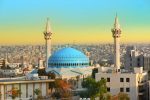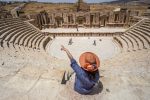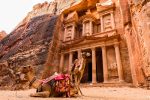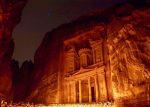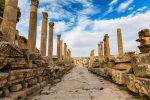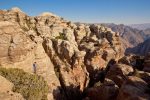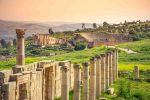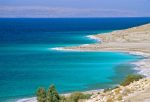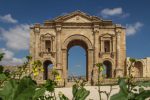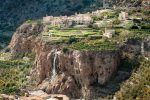Photo credit: Jordan Tourism Board
Why Travel to Jordan?
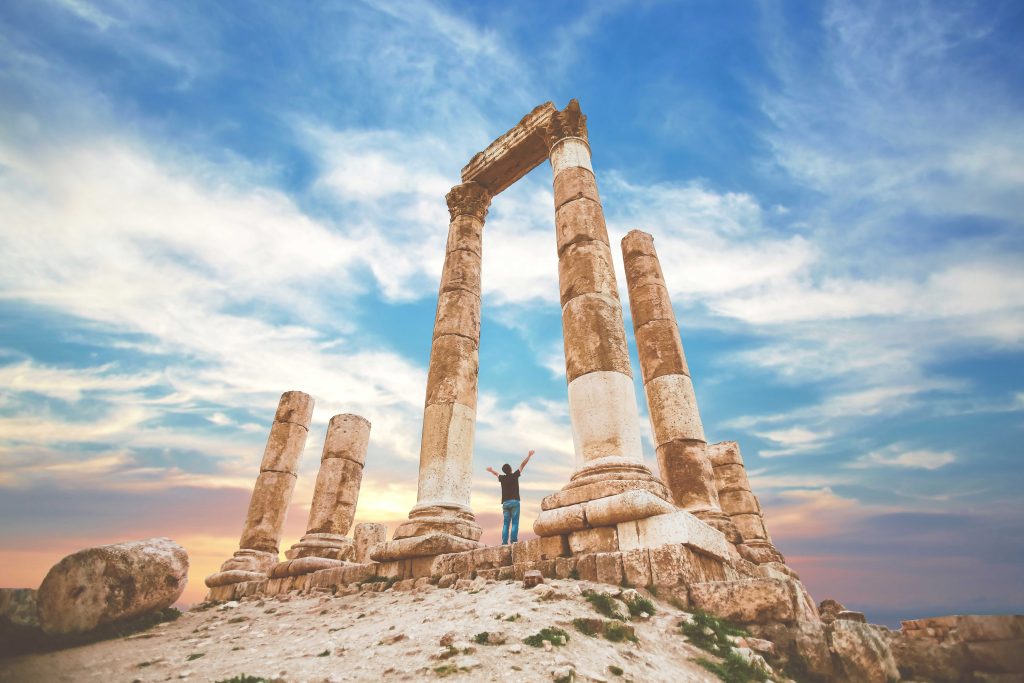
Jordan may not have the cachet of Italy, Greece, or Turkey, but it certainly deserves it. This medium-sized Levantine nation is practically bursting at the seams with exciting historical sites. The Nabataeans left behind Petra, a UNESCO-listed rock-hewn maze of temples, chasms, and mausoleums that is typically cited as one of the “new” Wonders of the World. The Romans left behind Jerash, arguably the largest and best remaining Roman ruins anywhere. The Crusaders left behind Kerak Castle, scenically perched on a hillside and finally defeated by Saladin’s forces in the 12th century. The list of historical sites could go on and on.
Jordan also boasts an impressive geography, and one that might surprise many new to the area. Yes, there are deserts here. Wadi Rum is a fabulously scenic area of rocky outcrops, mountains, and canyons in the country’s south. T. E. Lawrence passed through the area during the Arab Revolt, and the film Lawrence of Arabia was subsequently filmed there. The Dead Sea is another arid area, split between Jordan and Israel. Salt crusts line the sea, and the water is so dense with minerals that swimmers are far more buoyant than in freshwater or typical seawater. But Jordan is more than desert. The mountains of the far north are cool and receive relatively plentiful annual precipitation including even snow. Relict forests of oak, pine, and cedar still grow in this area. The mountains near Petra are home to the Dana Biosphere Reserve, a hotspot for biodiversity where the ecosystems of North Africa, the Arabian Peninsula, and the Mediterranean meet. In between the mountains and deserts are tracts of cultivated land exhibiting pastoral scenes where olives have been grown since Biblical times.
A final reason to visit Jordan is the Jordanian people. Christians and Muslims live side-by-side in many cities and towns. Regardless of religion, they have a passion for their culture that makes traveling in the country engaging and exciting. Ride camels with Bedouins in the deserts near Wadi Rum. Explore a gentrifying but still authentic neighborhood in Amman, filled with street art and galleries. Harvest olives and press them for oil alongside farmers whose ancestors have done the same for centuries. Learn the basics of Jordanian cookery at a farm-to-table restaurant. Experiences like these, and so many more (keep reading for an expanded list!), are why you should visit Jordan!
(click image to view larger photo)
When to Visit
In 2022 MIR introduced a range of small group and private tours in Oman, Qatar, Saudi Arabia, and the UAE, and we have a couple of tours to Iraq planned for 2023. The weather advice for those countries is, for the most part, simple. It is hot in the summer – too hot to travel – so late fall, winter, and early spring are best. Though also in the Middle East, Jordan defies that rule. Influenced by the Mediterranean as much as the deserts of the Arabian Peninsula, and mountainous in parts and low-lying in others, the weather in Jordan is highly variable. The best time to visit depends very much on where you’ll be going and what you’ll be doing. For an outdoorsy itinerary like our Active Essential Jordan, spring and fall are best. Winters could be too cold and rainy for hiking, and summer might be a bit hot. If your trip focuses on the Gulf of Aqaba (perhaps snorkeling or some time on the beach) or the deserts of Wadi Rum, winter would be great. For Amman and the mountains north of the city, including the area around the Roman ruins at Jerash, summer would be pleasant for most. Broadly speaking, most areas of the country will be comfortable for most purposes throughout the year. Our Essential Jordan itinerary, for example, can be comfortably done in the winter, the spring, the fall, or the summer.
(click image to view larger photo)
How to Get There
Jordan’s national airline Royal Jordanian serves a range of major cities in North America from Amman, including Chicago, Houston, Los Angeles, New York, and Toronto. They also operate flights to many European capital cities. Jordan is also well connected to the rest of the world by other major airlines including Qatar Airways, Emirates, and Turkish Airlines. United Airlines even operates a direct flight from Washington-Dulles. Jordan’s southern city Aqaba has its own airport, albeit a smaller one, with direct flights to Istanbul on Turkish Airlines. Land border crossing are also a possibility. Jordan shares open land borders with Israel, Saudi Arabia, and Iraq. Crossing by sea to Egypt is also possible.
(click image to view larger photo)
What to See in Jordan
Jordan is densely packed with fascinating sights and captivating experiences. No list could include them all, but here is a small subset of some of our favorites:
- Take part in a Levantine cooking lesson, a Jordanian wine tasting, or a weaving workshop with local women while in Amman.
- Compare and contrast the Roman ruins in Amman with the city’s up-and-coming neighborhoods, replete with street art and murals.
- Visit a winery’s tasting room in Amman and sample a range of wines made from a selection of over 40 grape varieties grown in Jordan, each showcasing the country’s unique terroir.
- Have a delicious lunch at Beit Khayrat Souf, a small cafe in Jerash working to empower local women and build financial independence.
- Spot migratory birds, vibrant blue lizards, hyrax, and maybe even ibex while hiking through the flora- and fauna-rich Dana Biosphere Reserve.
- Take in a view not too different than what Moses may have seen thousands of years ago, as you gaze west from atop Mount Nebo, across the Dead Sea towards the Promised Land.
- Explore Jordanian village culture through a variety of possible activities in Dana Biosphere Reserve, ranging from weaving to cooking to herding sheep and goats.
- Learn about a modern Jordanian effort to introduce sustainable agricultural practices to the country, and sample the amazing cuisine, at Carob House in Madaba.
- Overnight at a Bedouin camp near Little Petra, taking in the stars and the majesty of a remote desert night not far from what was 2,000 years ago an important suburb of a major city.
- Spend a full day exploring the Nabataean ruins at UNESCO-listed Petra, on many lists of the “Modern Seven Wonders of the World.”
- Rather than seeing Petra the way most do, hike in through the “Back Door” starting from Little Petra and passing by the monastery and other sights as you descend into the main valley.
- Meet with local women at the Disi Women’s Cooperative near Wadi Rum and learn how they are passing on traditional skills to benefit their communities.
- Hike and scramble up Jebel Umm al Dami, Jordan’s highest point, to take in the sweeping views of Wadi Rum and neighboring Saudi Arabia.
- Experience a little of bit of life as a Bedouin as you interact with a local family in Wadi Rum and learn how they spend their days.
- Explore Wadi Rum by 4WD jeep, stopping as you wish to hike, take pictures, or scramble on the rocks.
- Taste the Jordanian national dish, mansaf, at a restaurant famous for it in Kerak.
- Dip your toes in the Dead Sea, or perhaps head farther in to float in the highly salty water.
- Harvest olives side-by-side with Jordanian farmers in the hills of Ajloun north of Amman (October/November only).
- Enjoy a romantic and private dinner under the stars, perhaps with a bottle of wine, near Petra or in Wadi Rum.
(click image to view larger photo)
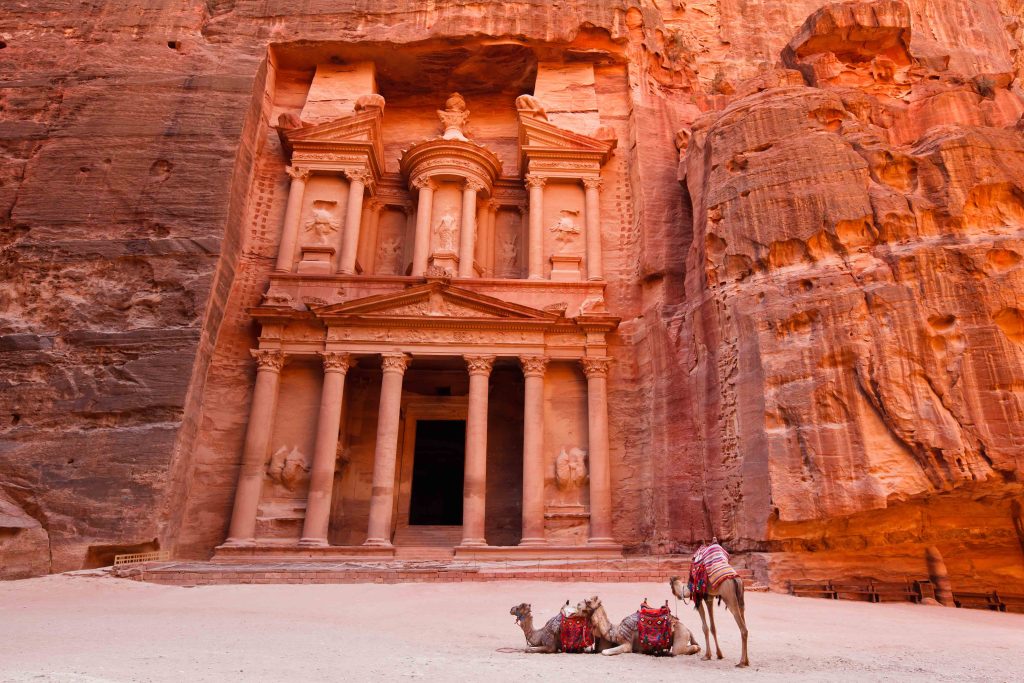
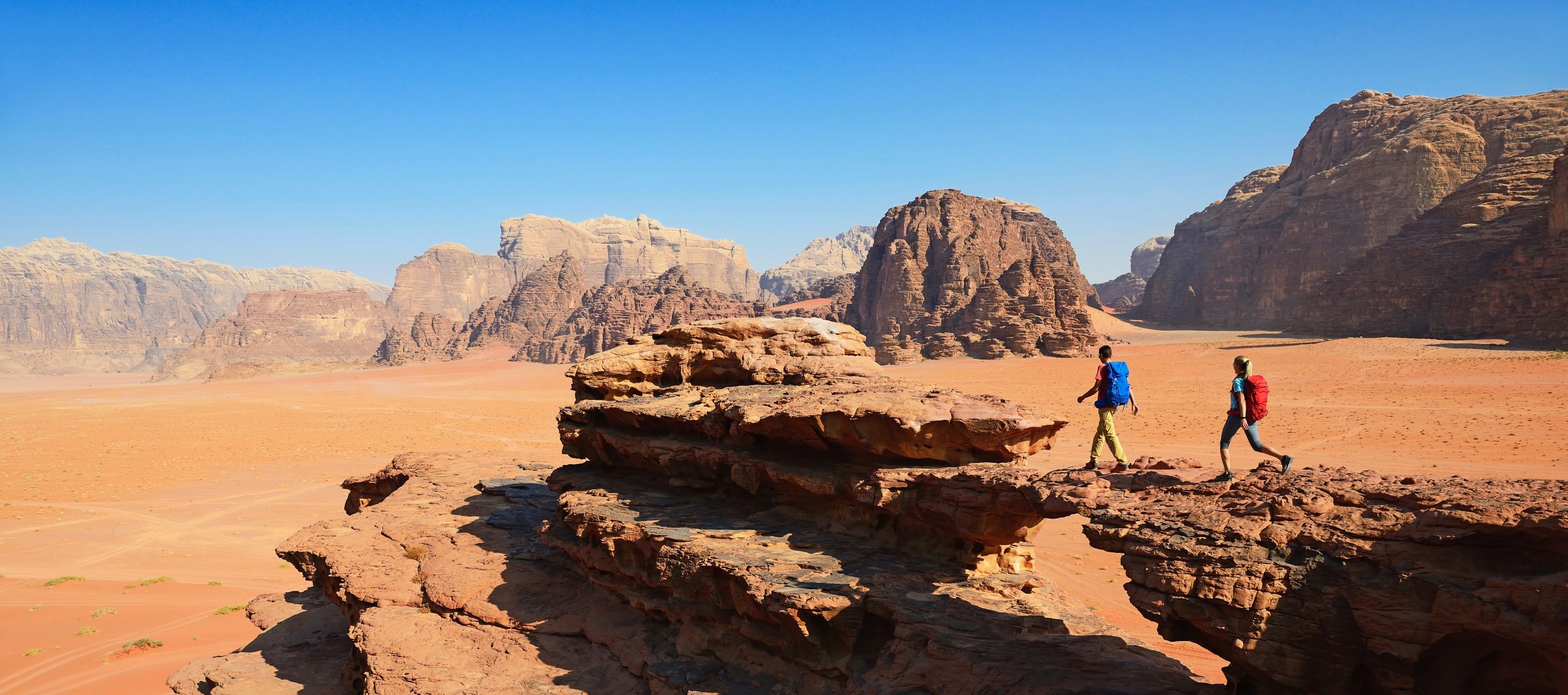
MIR Small Group Tours and Private and Custom Offerings
Starting this year (in 2022) MIR is offering a set of private, customizable, and flexible itineraries as part of our Essentials series: Essential Jordan and Active Essential Jordan. Both trips are eight days long, covering the main highlights of Amman, Petra, Wadi Rum, and the Dead Sea. Essential Jordan has more of an emphasis on history and cultural exploration, whereas Active Essential Jordan incorporates more time exploring Jordan’s wildernesses, including several outstanding day hikes. Both trips can be easily customized and they can be planned for almost any time of the year.
If you would like to visit Jordan but our Essential offerings don’t fit your needs, our custom travel planning specialists would also be thrilled to help you design the perfect custom itinerary.
Chat with one of our destination specialists now!
